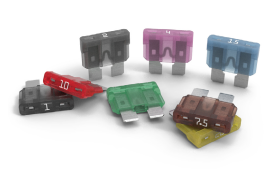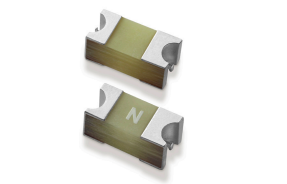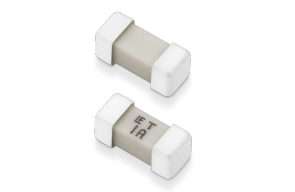ESD static protection tube (also known as ESD diode) is a key component in electronic devices to prevent electrostatic discharge damage, widely used in communication interfaces, high-speed data lines, automotive electronics and other fields. At present, the market brands are mainly divided into two categories: international first tier manufacturers and rapidly rising domestic manufacturers. The following is a summary of the main brands and an analysis of their characteristics:
1、 International first-line brands
Littelfuse
Features: Wide product line coverage, mature technology, high reliability, especially suitable for industrial and automotive electronics fields.
Typical applications: power management, communication equipment.
ON Semiconductor
Advantages: Known for high performance and low leakage current, offering multiple packaging options (such as SOT23, DFN) and strong compatibility.
Representative model: ESD9B3.3ST5G (ultra-low capacitance type).
Vishay
Technical highlights: High precision clamping voltage and fast response, especially suitable for high-frequency communication ports such as Ethernet and USB.
STMicroelectronics
Innovation direction: Focusing on high integration multi-channel ESD arrays, supporting complex interface (such as HDMI 2.1, TypeC) protection.
Texas Instruments (TI) and Nexperia
TI: Strong in integrated protection of power and signal chains, suitable for consumer electronics.
Nexperia is renowned for its automotive grade quality (such as AECQ101 certification) and zero defect production.
2、 Domestic brands (mainstream manufacturers and innovative directions)
DOWOSEMI Electronics
Comprehensive strength: a leading domestic brand covering the full voltage range (2.8V-36V), with over 30 packaging types (such as DFN0603, SOT563).
Core advantages:
Fully compatible with international models (such as DW05DBS replacing NXP PESD1LIN);
The low junction capacitance (0.3pF) model supports high-speed scenarios such as 10G Ethernet.
Typical models: DW24DBS (Automotive CAN Bus) DW054RVLCE(USB4.0)。
PANJIT
Technological breakthrough: The second generation ESD diode has a junction capacitance as low as 0.09pF and an insertion loss of only 0.25dB, optimized for 40Gbps high-speed interfaces such as Thunderbolt and DP 2.1.
Packaging innovation: DFN06032L and other miniature packaging are suitable for portable devices.
Socay Electronics
Featured product: SE05V150D52 (SOD523 package), certified by IEC 6100042 Level 4 (± 15kV air discharge), specializing in industrial and medical equipment.
RUILON
Positioning: Expert in low to medium power scenarios, specializing in ultra small size (0402 package) and high cost-effectiveness, suitable for smart wearable devices.
3、 Brand selection suggestions
According to the requirements of the application scenario, the following comparisons can be referred to:
|Scenario requirements | Recommended brands | Representative models | Key advantages|
|Automotive Electronics (CAN/LIN) | Dongwo, Nexperia | DW24DBS, PESD1CAN | Vehicle Certification, Low Leakage Current|
|Ultra high speed interface (≥ 10Gbps) | Johnson&Johnson, Vishay | PANJIT DFN series | Cj<0.1pF, low insertion loss|
|Consumer Electronics (USB/HDMI) | Dongwo, ON | DW054RVLCE, ESD9B Series | Multi channel Integration, High Cost Performance|
|Industrial Control (RS485) | Shuokai, Littelfuse | SE05V150D52, SM712 | High Wave Surge Tolerance (8/20 μ s)|
4、 Localization Trends and Selection Points
In recent years, due to trade frictions and supply chain security needs, domestic substitution has become the mainstream trend. The core competitiveness of domestically produced ESD tubes lies in:
Cost effectiveness and delivery time: The price is 20% -50% lower than international brands, and the delivery time is shortened by 30% -70%;
Customization capability: Dongwo and other manufacturers support packaging and parameter customization (such as DFN20108L special packaging);
Complete certification: Mainstream domestic models have passed IEC 6100042/4/5 and RoHS/REACH certification.
Key parameters for selection: operating voltage, junction capacitance (Cj), clamp voltage, peak pulse current (IPP), and packaging size. For example, USB 3.0 requires selecting models with Cj<1pF (such as Dongwo DW05DUCFBE), while in car systems need to pay attention to wide temperature support from 40 ℃ to 125 ℃.




